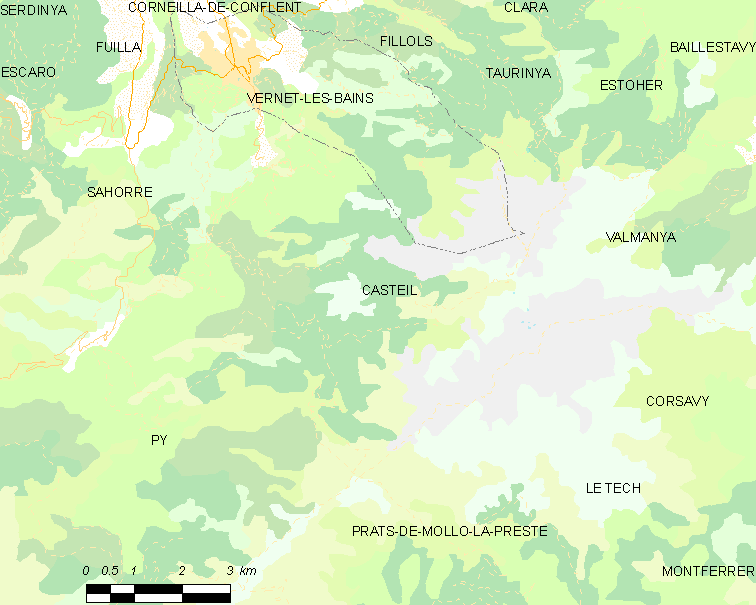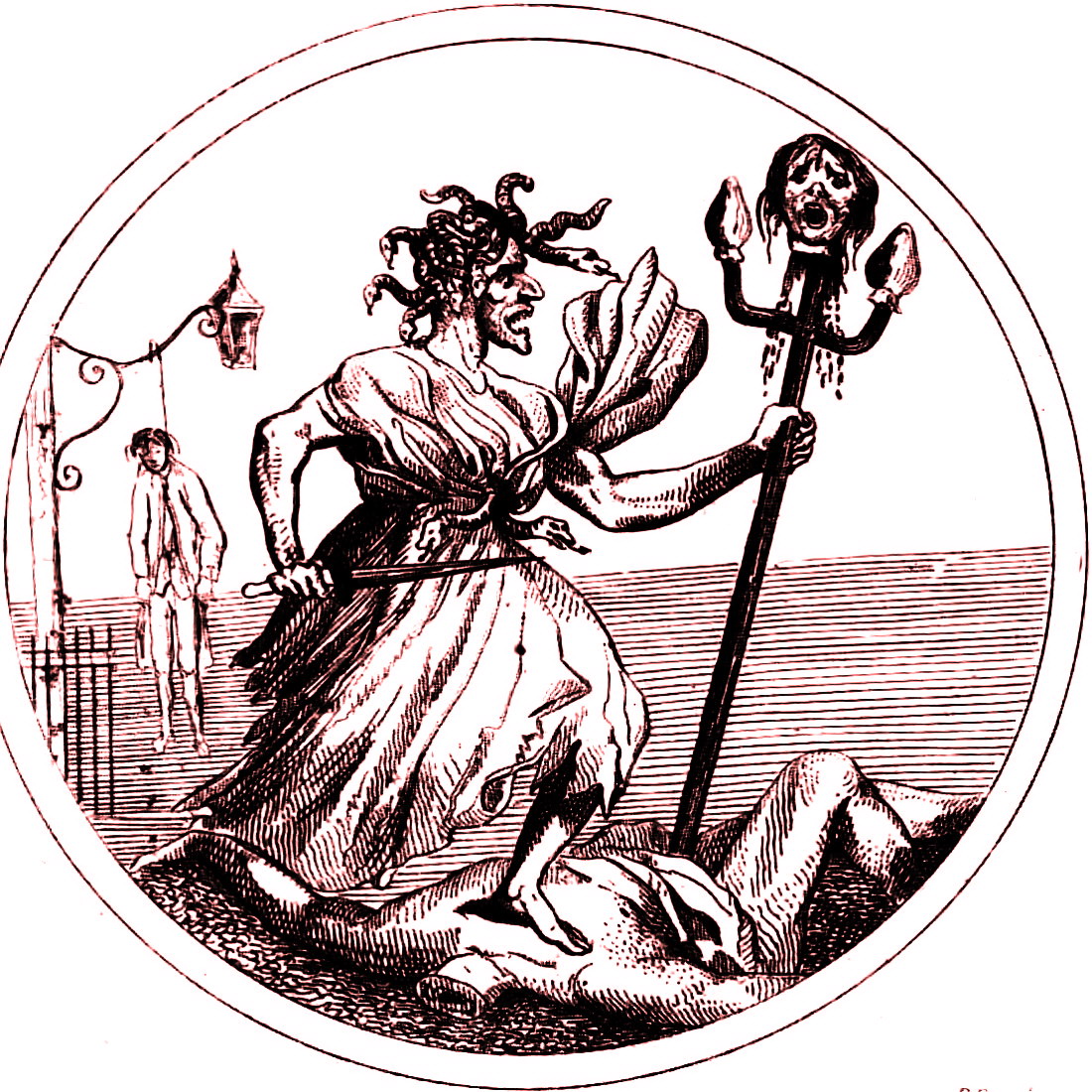|
Sant Martí Del Canigó
The abbey of Saint-Martin-du-Canigou ( Catalan: ''Abadia de Sant Martí del Canigó'') is a monastery built in 1009 in the Pyrenees of Northern Catalonia on Canigó mountain in present-day southern near the Spanish border. Pau Casals wrote a composition entitled "Sant Martí del Canigó" for Orchestra. Location The monastery is located on the territory of the commune of Casteil, in the Pyrénées-Orientales ''département''. History The original Romanesque style monastery was built from 1005 to 1009 by Guifred II, Count of Cerdanya ( Fr. ''Cerdagne''), in atonement for the murder of his son and was populated by Benedictine monks. In 1050, Guifred II died at the monastery he had built after having become a monk there 15 years before. In 1051 a messenger set forth to visit religious houses throughout Europe to solicit prayers for Guifred. He brought a parchment, a mortuary roll, upon which at each stop were added words of prayer and respect. This parchment has survived and sc ... [...More Info...] [...Related Items...] OR: [Wikipedia] [Google] [Baidu] |
Casteil
Casteil (; ) is a Communes of France, commune in the Pyrénées-Orientales Departments of France, department in southern France, part of the historical Conflent comarca. The abbey Martin-du-Canigou is located above Casteil. Geography Localisation Casteil is located in the canton of Le Canigou and in the arrondissement of Prades. Population See also *Communes of the Pyrénées-Orientales department * Martin-du-Canigou References Communes of Pyrénées-Orientales {{PyrénéesOrientales-geo-stub ... [...More Info...] [...Related Items...] OR: [Wikipedia] [Google] [Baidu] |
Wifred II, Count Of Cerdanya
Wifred or Wilfred (, or ) ( 970 – 1050) was the Count of Cerdanya (988–1035; as Wifred II) and Count of Berga (1003–1035; as Wifred I). He was the eldest son of Oliba Cabreta and Ermengard of Empúries. Life When his father abdicated in 988 to become a monk in Monte Cassino, Wifred's brother Bernard I, Count of Besalú, Bernard received Besalú while Abbot Oliba, Oliba received Berga. Their mother acted as regent until 994. When Oliba followed his father into the church in 1003, his county passed to Wifred. In that year Wifred and Bernard joined an alliance of Christian princes to fend off a Muslim invasion at the Battle of Torà.Carl Erdmann (1977), ''The Origin of the Idea of Crusade'' (Princeton: Princeton University Press), 99–100. Like his father and brother before him, he had a great affection for the church. He participated actively in the consecration of many churches and monasteries, such as Abbey of Saint-Martin-du-Canigou, San Martín del Canigó, founded in 1 ... [...More Info...] [...Related Items...] OR: [Wikipedia] [Google] [Baidu] |
Base Mérimée
The ''Base Mérimée'' () is the database of French monumental and architectural heritage, created and maintained by the French Ministry of Culture. It was created in 1978, and placed online in 1995. The database is periodically updated, and contains more than 320,000 entries as of October 2020. It covers religious, domestic, agricultural, educational, military and industrial architecture, and is subdivided into three domains: historical monuments, general inventory, and architecture (including remarkable contemporary architecture). The database was named after writer, historian and inspector-general of historical monuments Prosper Mérimée, who published the first survey of historic monuments in 1840. See also * Base Palissy, database of French movable heritage * List of heritage registers This list is of heritage registers, inventories of cultural properties, natural and human-made, tangible and intangible, movable and immovable, that are deemed to be of sufficient he ... [...More Info...] [...Related Items...] OR: [Wikipedia] [Google] [Baidu] |
First Romanesque
One of the first streams of Romanesque architecture in Europe from the 10th century and the beginning of 11th century is called First Romanesque, or Lombard Romanesque. It took place in the region of Lombardy (at that time the term encompassing the whole of Northern Italy) and spread into Catalonia and into the south of France. Its principal decoration for the exterior, bands of ornamental blind arches are called Lombard bands. It was characterized by thick walls and lack of sculpture in facades, and with interiors profusely painted with frescoes. Historical and geographical background During the first quarter of the 11th century, much architectural activity by groups composed of Lombardy, Lombard teachers and stonemasons (Comacine masters, Comacine Guild), who worked throughout much of Europe and Catalan territories and erected fairly uniform temples, some of which still exist today.The Santa Maria de Roses, Monastery of Santa Maria de Roses of 1022 is the oldest of the Lombard ... [...More Info...] [...Related Items...] OR: [Wikipedia] [Google] [Baidu] |
Community Of The Beatitudes
The Community of the Beatitudes is one of the "new communities" established in the Catholic Church after the Second Vatican Council (1962–1965) in the movement of the Charismatic Renewal Movement. It was founded in France in 1973, and came under the ecclesial authority of the Archbishop of Albi in southern France since May 1975 (Foundation in Cordes). It was recognised in 2002 by the Holy See as an association of the faithful. On December 3, 2008, the Pontifical Council for the Laity asked the Community to change its canonical form and come under the authority of the Congregation for Institutes of Consecrated Life and Societies of Apostolic Life. On June 29, 2011, the Holy See recognized the Community of the Beatitudes as a Public Association of the Faithful under the ecclesial authority of the Archbishop of Toulouse. On December 8, 2020, The Holy See recognized the Community of the Beatitudes as an Ecclesial Family of Consecrated Life of diocesan right by the Congregation for ... [...More Info...] [...Related Items...] OR: [Wikipedia] [Google] [Baidu] |
Catalonia
Catalonia is an autonomous community of Spain, designated as a ''nationalities and regions of Spain, nationality'' by its Statute of Autonomy of Catalonia of 2006, Statute of Autonomy. Most of its territory (except the Val d'Aran) is situated on the northeast of the Iberian Peninsula, to the south of the Pyrenees mountain range. Catalonia is administratively divided into four Provinces of Spain, provinces or eight Vegueries of Catalonia, ''vegueries'' (regions), which are in turn divided into 43 Comarques of Catalonia, ''comarques''. The capital and largest city, Barcelona, is the second-most populous Municipalities in Spain, municipality in Spain and the fifth-most populous List of metropolitan areas in Europe, urban area in the European Union. > > > ''Catalonia'' theoretically derived. During the Middle Ages, Byzantine Empire, Byzantine chroniclers claimed that ''Catalania'' derives from the local medley of Goths with Alans, initially constituting a ''Goth-Alania''. Othe ... [...More Info...] [...Related Items...] OR: [Wikipedia] [Google] [Baidu] |
Bishop Of Elne And Perpignan
The Diocese of Perpignan–Elne (Latin: ''Dioecesis Elnensis''; French: ''Diocèse de Perpignan–Elne''; Catalan: ''Bisbat de Perpinyà–Elna'') is a Latin diocese of the Catholic Church in France."Diocese of Perpignan-Elne" ''''. David M. Cheney. Retrieved February 29, 2016 "Diocese of Perpignan-Elne" ''GCatholic.org''. Gabriel Chow. Retrieved February 29, 2016. The diocese comprises the Department< ... [...More Info...] [...Related Items...] OR: [Wikipedia] [Google] [Baidu] |
Reign Of Terror
The Reign of Terror (French: ''La Terreur'', literally "The Terror") was a period of the French Revolution when, following the creation of the French First Republic, First Republic, a series of massacres and Capital punishment in France, numerous public executions took place in response to the Federalist revolts, revolutionary fervour, Anti-clericalism, anticlerical sentiment, and accusations of treason by the Committee of Public Safety. While terror was never formally instituted as a legal policy by the Convention, it was more often employed as a concept. Historians disagree when exactly "the Terror" began. Some consider it to have begun in 1793, often giving the date as 5 September or 10 March, when the Revolutionary Tribunal came into existence. Others cite the earlier September Massacres in 1792, or even July 1789 when the first killing of the revolution occurred. Will Durant stated that "strictly, it should be dated from the Law of Suspects, September 17, 1793, to the e ... [...More Info...] [...Related Items...] OR: [Wikipedia] [Google] [Baidu] |
Louis XVI
Louis XVI (Louis-Auguste; ; 23 August 1754 – 21 January 1793) was the last king of France before the fall of the monarchy during the French Revolution. The son of Louis, Dauphin of France (1729–1765), Louis, Dauphin of France (son and heir-apparent of Louis XV, King Louis XV), and Maria Josepha of Saxony, Dauphine of France, Maria Josepha of Saxony, Louis became the new Dauphin of France, Dauphin when his father died in 1765. In 1770, he married Marie Antoinette. He became King of France and Navarre on his grandfather's death on 10 May 1774, and reigned until the proclamation of the abolition of the monarchy, abolition of the monarchy on 21 September 1792. From 1791 onwards, he used the style of king of the French. The first part of Louis XVI's reign was marked by attempts to reform the French government in accordance with Enlightened absolutism, Enlightenment ideas. These included efforts to increase Edict of Versailles, tolerance toward non-Catholics as well as abolishing ... [...More Info...] [...Related Items...] OR: [Wikipedia] [Google] [Baidu] |
Catalan Earthquake Of 1428
The Catalan earthquake of 2 February 1428, known in Catalan as the ' because it took place during Candlemas, struck the Principality of Catalonia, especially Roussillon, with an epicentre near Camprodon. The earthquake was one of a series of related seismic events that shook Catalonia in a single year. Beginning on 23 February 1427, tremors were felt in March, April, 15 May at Olot, June, and December. They caused relatively minor visible damage to property, notably to the monastery of Amer; but they probably caused severe weakening of building infrastructure. This would account for the massive and widespread destruction that accompanied the subsequent 1428 quake. Modern estimates of the intensity are VIII (''Damaging'') or IX (''Destructive'') on the Medvedev–Sponheuer–Karnik scale. The ramparts of Prats-de-Mollo-la-Preste were destroyed. The clocktower of Arles-sur-Tech collapsed. The monastery of Fontclara at Banyuls-dels-Aspres was devastated. The damage sustained by th ... [...More Info...] [...Related Items...] OR: [Wikipedia] [Google] [Baidu] |




